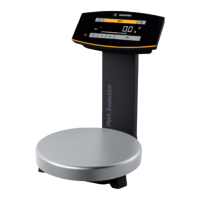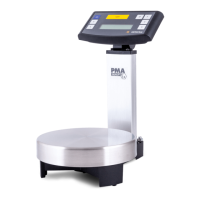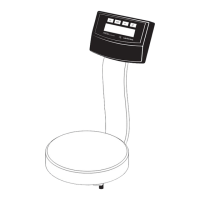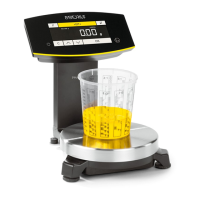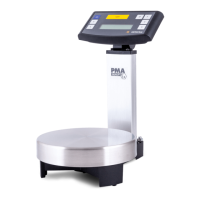6
Follow the instructions below to ensure safe and trouble-free operation
of your scale:
! Make sure that the voltage rating printed on the AC adapter or power
supply is identical to your local AC power rating
! The only way to turn the scale power off completely is to disconnect the
AC adapter or power supply from the scale. Only disconnect the power
cable from the scale after the AC adapter or power supply has been
disconnected from the wall outlet (mains supply).
! Protect the AC adapter or power supply as required by the IP65 standard
(dust-tight and washdown-resistant)
! The casing on the power cable of the AC adapter or power supply
is made of
– rubber (on model 609308-01)
– PVC (on model 609308-21).
All other cables connecting the weighing equipment and peripheral devices,
as well as the wiring inside the devices, are cased in PVC materials.
Chemicals that corrode these materials must be kept away from these cables.
! Use only cabling and extensions approved by Sartorius, as these are made
in accordance with the restrictions on cable lengths imposed by the
capacitance and inductivity values (see the attached certificate of conformity)
and the requirements for electromagnetic compatibility.
! PMA Series equipment may only be operated in an ambient temperature
range from 0 °C to 40 °C (32 °F to 104 °F). Make sure there is sufficient
ventilation to prevent heat from building up in the equipment.
! The equipment must be used indoors.
! The scale is IP40-protected; the peripheral equipment is IP54 or IP65-
protected. Handle the equipment with care as required by the IP protection
ratings. The environment in which it is used must also be protected.
! Connect only Sartorius-approved cables to the data interface port on the
PMA scale. Attach the cable securely to the interface port. To ensure safety,
disconnect the equipment from power before connecting or disconnecting
the data cable. For transmission of data to peripheral equipment located
outside the hazardous area/location, type Z966 (EEx ia) IIC certified Zener
barriers must be installed, such as the Zener barriers made by the Pepperl
+ Fuchs company. The barriers must be installed outside the hazardous
area/location and must be connected to the equipotential bonding
conductor by an equipotential busbar. The barrier can be used in
an ambient temperature range from 0 °C to 40 °C (32 °F to 104 °F).
Connected devices must not be capable of supplying more than
250 V to the barriers.
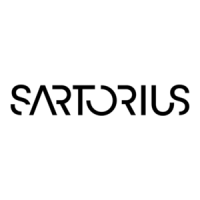
